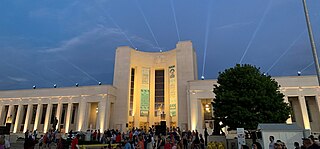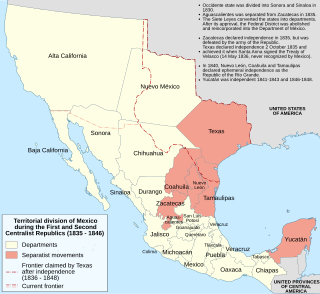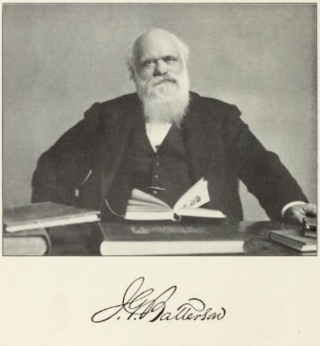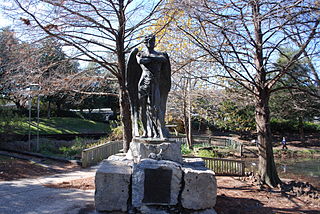
The Hall of State is a building in Dallas's Fair Park that commemorates the history of the U.S. state of Texas and is considered one of the best examples of Art Deco architecture in the state. It was designed and built for the Texas Centennial Exposition.

The Soldiers and Sailors Monument is a monument erected in Boston Common in downtown Boston, dedicated to soldiers and sailors of the Commonwealth of Massachusetts who died in the American Civil War. Designed by Martin Milmore, construction began in 1874 and the monument was dedicated on September 17, 1877. Union Generals George B. McClellan and Joseph Hooker were among the estimated 25,000 people attending the dedication on Boston Common.

The San Jacinto Monument is a 567.31-foot-high (172.92-meter) column located on the Houston Ship Channel in unincorporated Harris County, Texas, about 16 miles due east of downtown Houston. The Art Deco monument is topped with a 220-ton star that commemorates the site of the Battle of San Jacinto, the decisive battle of the Texas Revolution. The monument, constructed between 1936 and 1939 and dedicated on April 21, 1939, is the world's tallest masonry column and is part of the San Jacinto Battleground State Historic Site. By comparison, the Washington Monument is 554.612 feet (169.046 m) tall, which is the tallest stone monument in the world. The column is an octagonal shaft topped with a 34-foot (10 m) Lone Star – the symbol of Texas. Visitors can take an elevator to the monument's observation deck for a view of Houston and the San Jacinto battlefield.

The Runaway Scrape events took place mainly between September 1835 and April 1836 and were the evacuations by Texas residents fleeing the Mexican Army of Operations during the Texas Revolution, from the Battle of the Alamo through the decisive Battle of San Jacinto. The ad interim government of the new Republic of Texas and much of the civilian population fled eastward ahead of the Mexican forces. The conflict arose after Antonio López de Santa Anna abrogated the 1824 Constitution of Mexico and established martial law in Coahuila y Tejas. The Texians resisted and declared their independence. It was Sam Houston's responsibility, as the appointed commander-in-chief of the Provisional Army of Texas, to recruit and train a military force to defend the population against troops led by Santa Anna.

Pompeo Luigi Coppini was an Italian born sculptor who emigrated to the United States. Although his works can be found in Italy, Mexico and a number of U.S. states, the majority of his work can be found in Texas. He is particularly famous for the Alamo Plaza work, Spirit of Sacrifice, a.k.a. The Alamo Cenotaph, as well as numerous statues honoring Texan figures, such as Lawrence Sullivan Ross, the fourth President of Texas A&M University.

Henry Wax Karnes was notable as a soldier and figure of the Texas Revolution, as well as the commander of General Sam Houston's "Spy Squad" at the Battle of San Jacinto.

Benjamin Rush Milam was an American colonist of Mexican Texas and a military leader and hero of the Texas Revolution. A native of what is now Kentucky, Milam fought beside American interests during the Mexican War of Independence and later joined the Texians in their own fight for independence, for which he assumed a leadership role. Persuading the weary Texians not to back down during the Siege of Béxar, Milam was killed in action while leading an assault into the city that eventually resulted in the Mexican Army's surrender. Milam County, Texas and the town of Milam are named in his honor, as are many other placenames and civic works throughout Texas.

Ector County Independent School District (ECISD) is a public school district based in Odessa, Texas, United States.

James Goodwin Batterson was an American designer and builder, the owner of New England Granite Works from 1845 and a founder in 1863 of Travelers Insurance Company, both in Hartford, Connecticut. He introduced casualty insurance in the United States, for which he was posthumously inducted into the Insurance Hall of Fame (1965).

William Mozart McVey was an American sculptor, animalier and teacher.

The 1996 United States presidential election in Texas took place on November 5, 1996. All fifty states, and the District of Columbia, took part in the 1996 United States presidential election. State voters chose 32 electors to the Electoral College, which selected the president and vice president.

The Sam Houston Monument is an outdoor bronze sculpture of Sam Houston by Enrico Cerracchio, installed at the northwest corner of Houston's Hermann Park, in the U.S. state of Texas. The work is administered by the City of Houston's Municipal Arts Commission.

The 1976 United States presidential election in Texas was held on November 2, 1976, as part of the 1976 United States presidential election. Texas was won by former governor Jimmy Carter of Georgia with 51.14% of the vote, giving him 26 electoral votes. This result made Texas about 1% more Democratic than the nation-at-large. He also beat the incumbent President Gerald Ford in the general election. To date, this remains the last time that a Democratic presidential candidate won Texas, and the last time Texas voted more Democratic than the nation-at-large.

Spirit of the Confederacy, also known as the Confederacy Monument, is an outdoor bronze sculpture depicting an angel holding a sword and palm branch by Louis Amateis, installed in Houston's Sam Houston Park, in the U.S. state of Texas. It was erected in 1908 by a local chapter of the United Daughters of the Confederacy. The statue was removed from the park in 2020 and relocated to the Houston Museum of African American Culture.

General Alexander Macomb is a monumental statue in Detroit, Michigan, United States. It was designed by sculptor Adolph Alexander Weinman and was dedicated in 1908 in honor of Alexander Macomb, a Detroit native who had served as the Commanding General of the United States Army for several years in the early 1800s. The monument, which consists of the bronze statue of Macomb standing atop a granite pedestal on a circular concrete platform, was dedicated on September 11, on the anniversary of the Battle of Plattsburgh, a War of 1812 battle that Macomb had participated in. Since the 2010s, the statue has come under criticism due to Macomb's connections to slavery and the mistreatment of Native Americans, with several news sources publishing opinion pieces calling for the statue's removal. During the George Floyd protests in 2020, the monument was vandalized several times.

Milam Park, formerly Milam Square, is an urban park located in downtown San Antonio, Texas, United States. Originally used as a burial ground, the park was extablished in 1884. It is named after Benjamin Milam, whose remains are interred under a monument on the west end of the park.





















